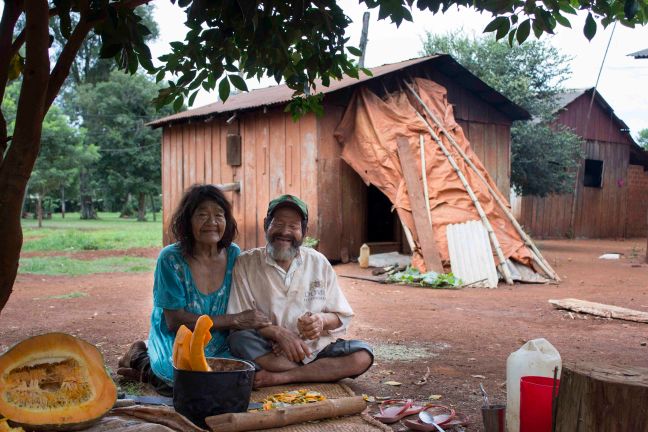
For a little over a week (28/03-9/04) we Track got to live with one of Paraguay’s indigenous tribes, the Ache. The particular community we stayed with hosts around 200 Ache (who collectively gave their lives to God some years ago) and there are around 2000 remaining Ache in the world. We bussed across Paraguay from Asuncion to the border of Brazil to where the Ache still have land. Our time was used gathering information, photos, footage and some interviews with the hope to share the story of the Ache people in an honouring and just way (as part of our final project). For now, I’d love to share a portion of the Ache story, of how they were saved from extinction.


The Ache, like many of the indigenous peoples, have a history of being hunted and struggling to survive amidst the advance of civilization. Last century, you could purchase a kidnapped Ache person in Paraguay’s public squares as a domestic servant. The common view was that the indigenous peoples were basically animals and thus a life as a slave in a home was an improvement for them. For the Ache, their survival became compromised as the agricultural frontier moved into their jungle areas, with immigrants (many from Brazil) buying up their land. The Paraguayan Government was indifferent that these native people lived on this land. The Ache were displaced within the jungle as portions were destroyed and turned into soy-bean farms. Now, the Ache have no jungle to live in and are still trying to adjust to life without the jungle as their livelihood. Diseases such as the flu spread amongst the Ache and because of their lack of immunity they began to die off. This was at the infamous government reservation in the 1970s. A Christian missionary heard of the Ache’s struggle for survival and sought to find them to aid them. He negotiated with a Paraguayan slave owner to get an Ache Indian (being sold as a slave) as a guide, and he was able to set him free from his owner. Together they were able to connect with the Ache living in the jungle. To this day, this missionary’s son, daughter-in-law and grandchildren invest in the protection and well being of the Ache people. As a tribal group, the Ache would not have survived if Rolf Fostervold had not made a friendly contact with them.


For us, it has been interesting and valuable to better understand what life looks like now for an indigenous tribe. I think it’s fair to say that all of our expectations were wrong to a certain extent. The Ache are still transitioning into how to maintain their cultural traditions whilst adopting ways to make life easier for them. We had the honour of meeting the elder generation, some of whom lived in the jungle. We had the honour of meeting Lorenzo, the slave who was freed by the missionary years ago. What I suspect will impact me most is hearing about and observing the value and intelligence of these people. It is heartbreaking to hear of the narrow-mindedness that inspires worldview to dictate that lifestyles that are incredibly different are somehow less. The Ache are extremely skilled and knowledgeable, especially when it comes to their land, to farming and to hunting. There is authenticity about how they live, about how the children run barefoot between different homes together. We have felt so welcomed and enjoyed the warmth of this community – they adore hugging and parts of their Church services are reserved for hugging each other. We felt so loved.



Beautiful photos. Jx